Introduction
Lighter than canisters and less prone to user error or landscape limitations than relying on a traditional food bag hang, Ursacks have become a popular way to keep food safe among lightweight backpackers. Although certainly not the only option for food storage in the backcountry, their relative ease of use and effectiveness against bears, rodents, and other wildlife make them one of the more appealing ones. Effective Ursack use, however, isn’t common knowledge among most backpackers, especially those who don’t read instructions. The purpose of this article is to help the reader learn how to use an Ursack properly.
Ursacks are approved as bear-resistant containers in many national parks. This allows backpackers to meet park requirements without having to use heavy and bulky bear canisters. In areas where there are minimal food storage regulations, but the landscape makes the traditional food bag hang a challenging proposition (deserts, areas above treeline, and subalpine areas with thick conifers that make finding a stout and extended limb difficult) an Ursack is often one of the best options.
I had hoped that with a more abundant layer of blubber around my midsection as I approached the beginning of middle age, maybe any bears that saw me waddling down the trail would feel required to secure their food, rather than the other way around. Unfortunately, a wildlife biologist friend of mine assured me that this was delusional so I found myself sticking to more traditional methods of protecting my food from bears.
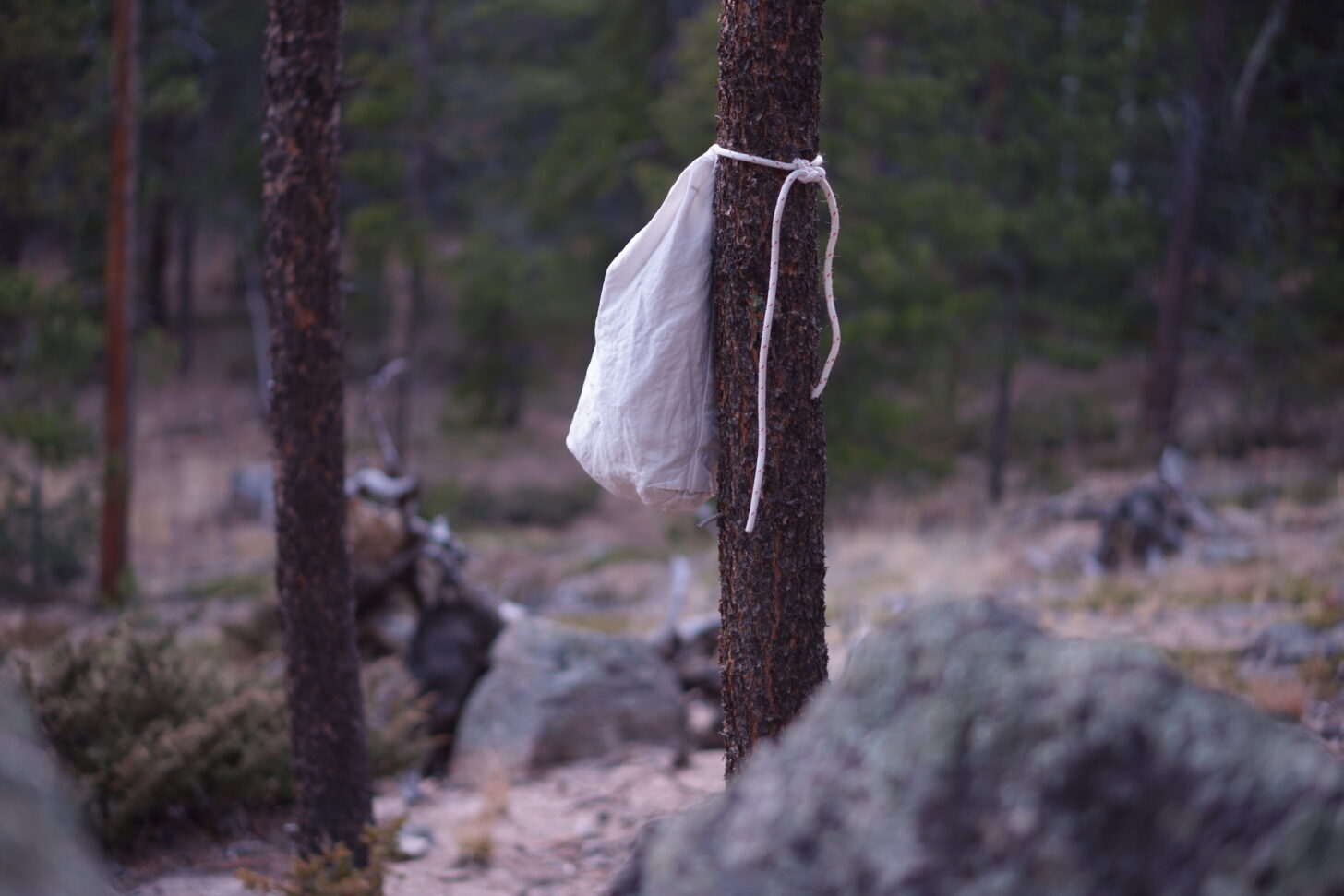
Why Store Food in a Wildlife-Resistant Container
This article is focused on how to use an Ursack, but the why is of paramount importance. Properly storing food keeps wildlife safe, keeps other humans who camp in the same site after you’re gone safe, and can keep you from having to hike out on an empty stomach after your food gets acquired and eaten by wildlife. And wildlife aren’t picky – you won’t find that they simply high-graded your trail mix and picked out the M&Ms, or only went for the Banana Nut Bread Clif Bars. They will eat, or attempt to eat, as much as they can. Hard-sided canisters, Ursacks, or food storage lockers provided by land managers are the most effective options for protecting your food in the backcountry. Ursacks are lighter than bear canisters, which makes them a compelling option for backpackers. Making sure your food is stored securely isn’t exactly the most glamorous part of backpacking, but it is of utmost importance as the use of public lands increases.

Why You Should Learn to Use an Ursack Properly
As with many things in the lightweight backpacking realm, acquiring the appropriate gear is just one piece of the puzzle. Learning how to effectively use the gear – or skill acquisition if you want to use a spiffy-sounding name – is just as important. The snazziest Dyneema Composite Fabrics tarp won’t do you much good if you have poor site selection skills and end up pitching it on a windy spot that pools water right before a thunderstorm rolls through. Likewise, tying an Ursack to a scrawny tree using a jumble of random knots won’t allow it to function properly and protect your food if a hungry bear stumbles upon it.
Unlike climbing or mountaineering, where your life literally depends on tying a proper knot, you almost certainly won’t die if you mess up tying a knot on your Ursack. However, improperly tying a knot greatly increases the chances of a bear (or smaller critter) being able to access and eat your food. At this point, the animal may progress down the dark path of habituating its behavior with a predisposition to easily-accessible food provided by humans. That has unfortunate consequences for a bear especially, including but not limited to relocation or euthanization. And it increases the risk of harm to campers exposed to that bear before management measures are taken. There are consequences to yourself and others if improperly using an Ursack, so take the time to practice the basic knots and make sure you can properly use it before heading out to the backcountry. Or just use a canister if you find an Ursack to be too technically burdensome.
How to Use an Ursack
While the instructions on how to use an Ursack from the manufacturer are sufficient, a bit more depth and detail on how to properly use this piece of gear is warranted.

Once your food has been stored inside the Ursack, you need to close the bag to prevent bears or other animals from getting inside, make sure to not be sloppy here as providing the space for a claw-hold can compromise the effectiveness of the bag.

To close and secure the bag, use a simple double overhand knot.


But first, make sure the strands of the rope in the drawstring cross and form an X. This video does a great job of showing the steps to do this. Practicing the knots at home a few times before going out for the first time with your Ursack is a good use of time. Don’t be lazy and rely on the facetious aphorism of “Don’t know the knot? Just tie a lot!” and think that a random rat’s nest of loops will somehow be easier than learning the correct way to close your Ursack and secure it to a tree.
After you’ve closed the Ursack as tight as possible using the proper knots, you should secure it to something substantial to prevent it from getting dragged away by a hungry animal. The best option is a sturdy tree limb or trunk. Don’t underestimate what “sturdy” means, as bears have chewed through limbs to get food. Here are some guidelines:
- Aim for something five inches or thicker.
- Pick a location away from your camp to store the Ursack. The further the better, but aim for at least 200 feet.
- If using multiple Ursacks, split them up and keep at least 75 feet between them.
- You can also use a counter-balance method to hang your Ursacks, but since the security of the Ursack lies in its fabric and not any particular distance from the ground or tree trunks that could be scaled by bears this is generally going to be overkill.
- When attaching your Ursack to a tree, use a figure-8 knot, at least three half-square knots (e.g., one full square knot plus one additional half-square knot), or another knot that resists clinching so that it won’t be a struggle to untie it the next day. Ursack has a video of their recommended knot on their website, and in my experience, this truly is the best knot for tying an Ursack, in terms of both ease of untying and security (caveat: it requires a carabiner or other secure chock).

What if you’re using an Ursack in an area where there are no trees?
If no trees are available to attach your Ursack to, like in a desert or alpine tundra environment, you can bury the Ursack under rocks to discourage animals from investigating it. In alpine environments where bears are present, tying the Ursack into the crevice formed by two immovable pieces of talus lying against each other may be a viable option. Just be aware that a grizzly bear can easily move a rock that weighs a few hundred pounds, even if you can’t.
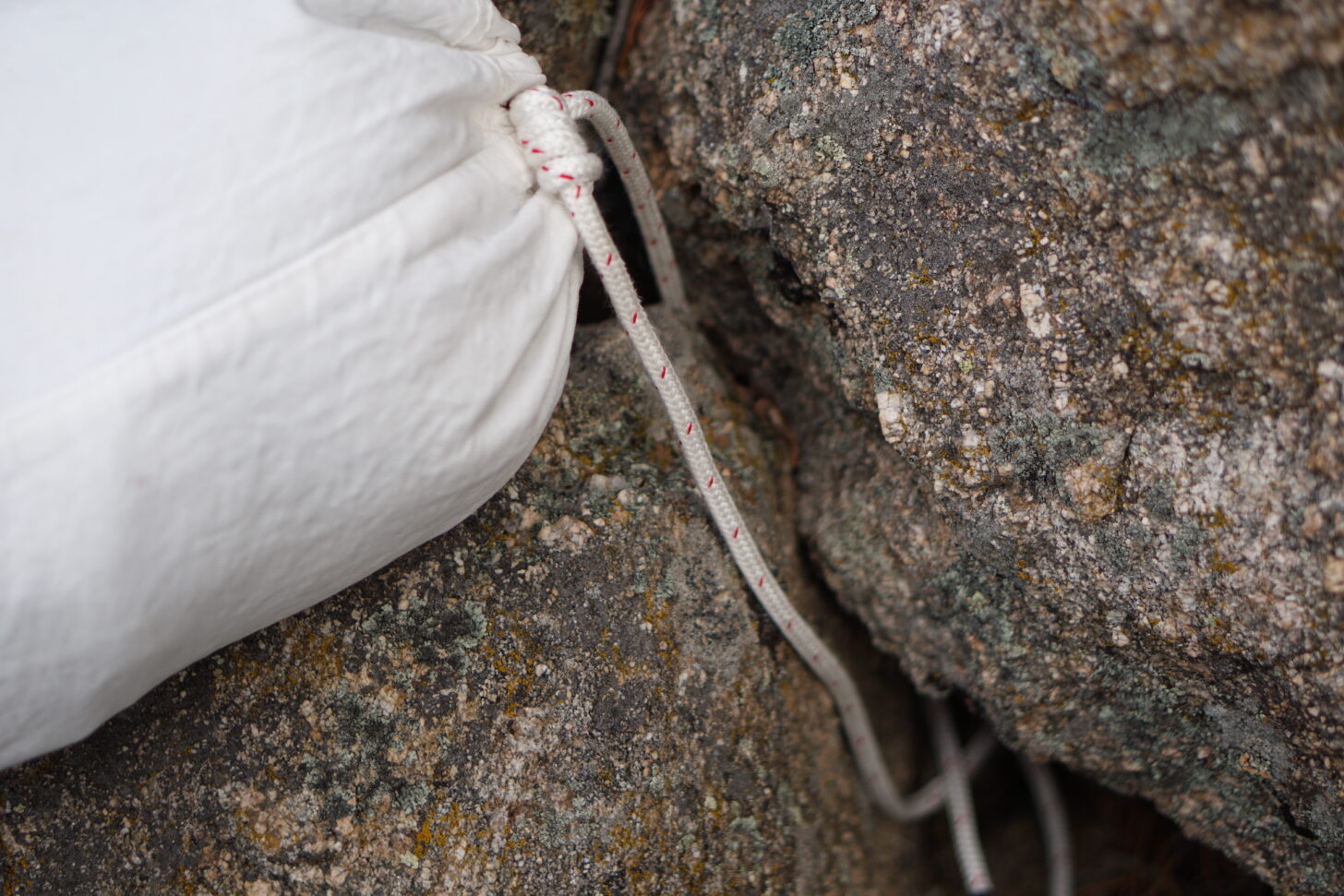
One trick Ryan Jordan has used when hiking in a large group above the treeline and no talus is available is to tie everyone’s Ursacks together (they often carry a dozen or more on long trips) in a big Circle of Ursacks. This is not ideal. Food odors are concentrated into a single area, and loose Ursacks that aren’t tightly secured to an immovable object may be more prone to failure since animals can gain better access to the drawcord opening. However, it may be one option for expeditions to save time. In addition, large groups concentrate human smells that are not attractive to bears, so there may be some benefit to keeping your Circle of Ursacks inside your camping area in some situations where regulations allow it.
Caveat: this technique (the Circle of Ursacks) won’t be endorsed by Ursack or most land management agencies. We don’t endorse it where regulations prohibit it.
What about using an odor barrier bag with an Ursack?
In addition, if you find yourself frequently in areas where the ideal Ursack tie-up isn’t available, or areas frequented by habituated bears, you may want to protect your food with an odor barrier. Storing your food in OPSaks or zip-closure 5-mil mylar bags (we recommend the Shield Pro brand) will reduce the chances of a bear or other animals smelling your food to begin with.
How Not To Secure an Ursack
1. Don’t just prop an Ursack up in a tree. Secure it to trees using the methods described above. Black bears, raccoons, and other animals can climb trees and can easily access your food.
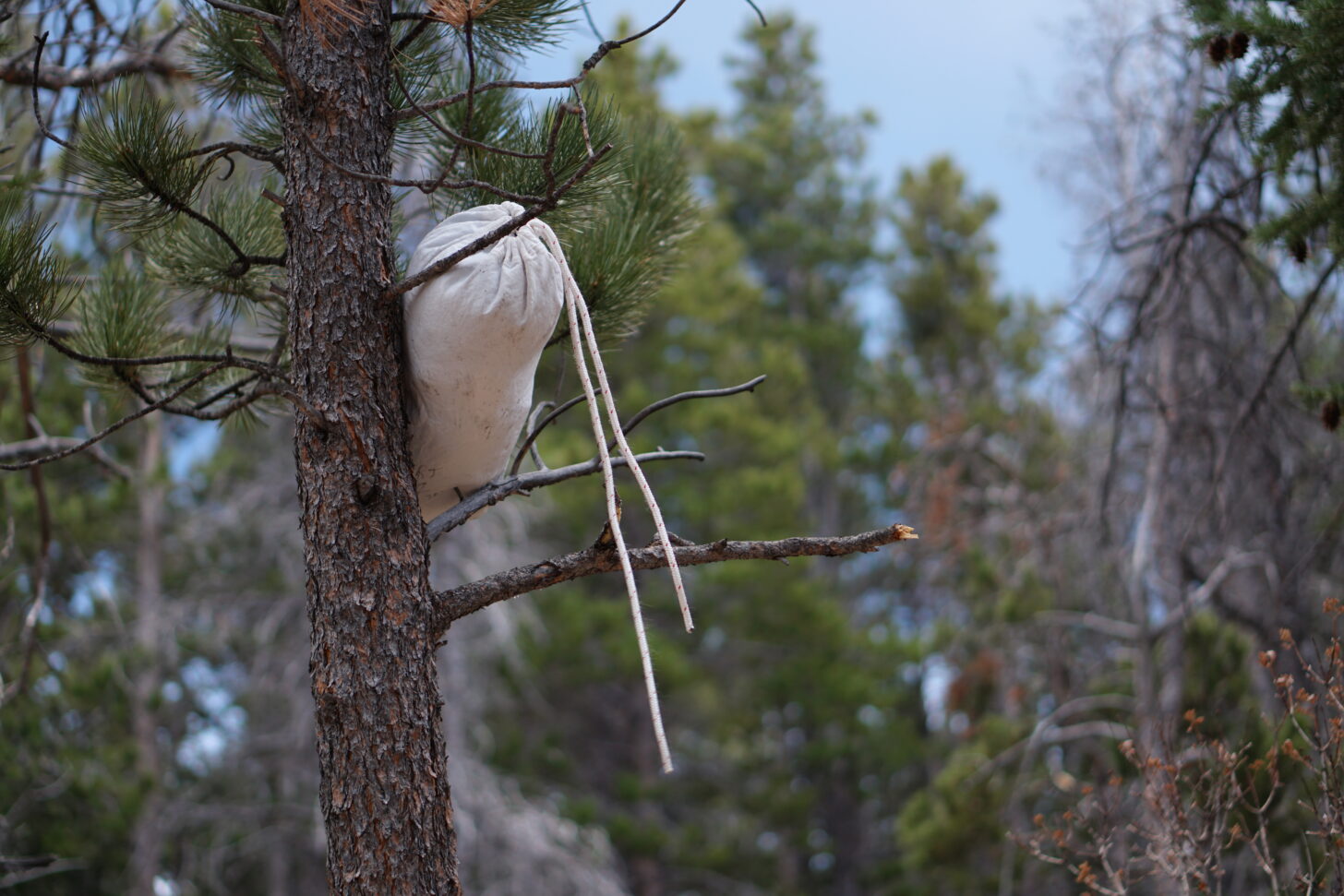
2. Don’t tie it to a tree with slack drawcord. This exposes the opening to animals and increases the chance for an Ursack failure.
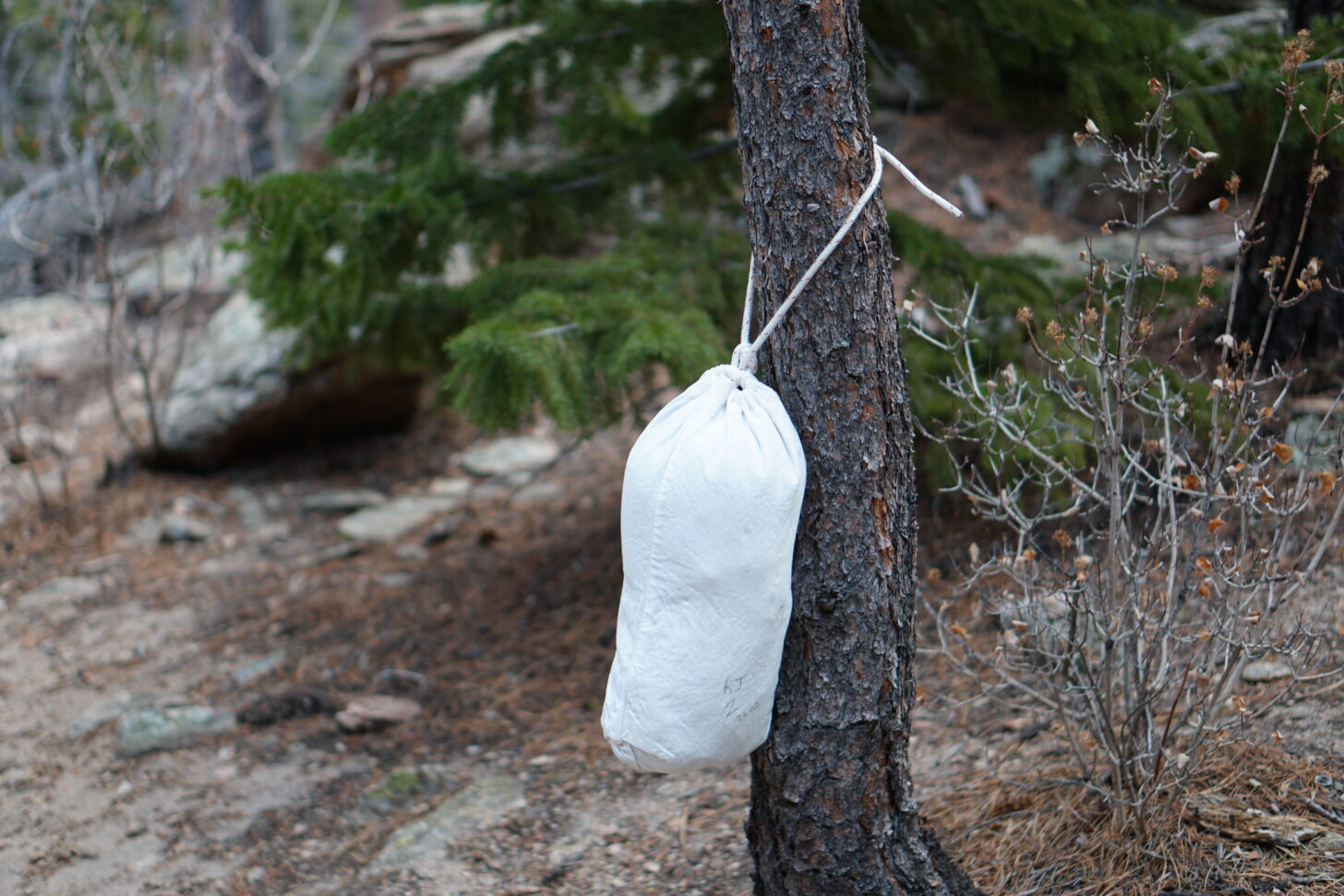
3. Don’t tie an Ursack to a thin-diameter tree (less than four inches in diameter). Bears can chew through, or push over and break, thin trees.
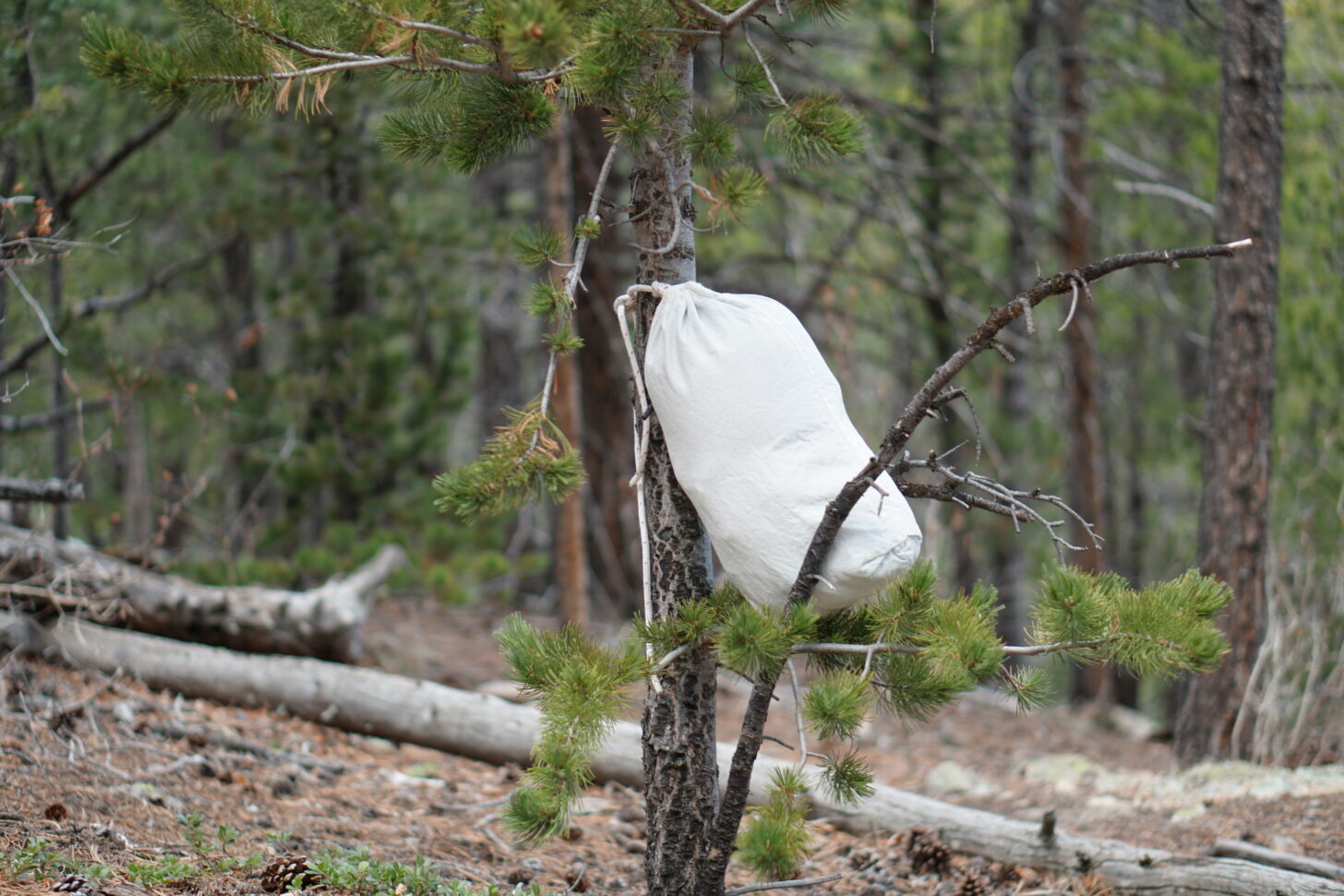
4. Don’t tie your Ursack to a tree near a trail corridor, keep your camp discreet from other users – consider LNT Principle Number 7: Be Considerate to Other Visitors. In addition, don’t tie your Ursack along trails, game trails, rivers, or other obvious big game corridors.
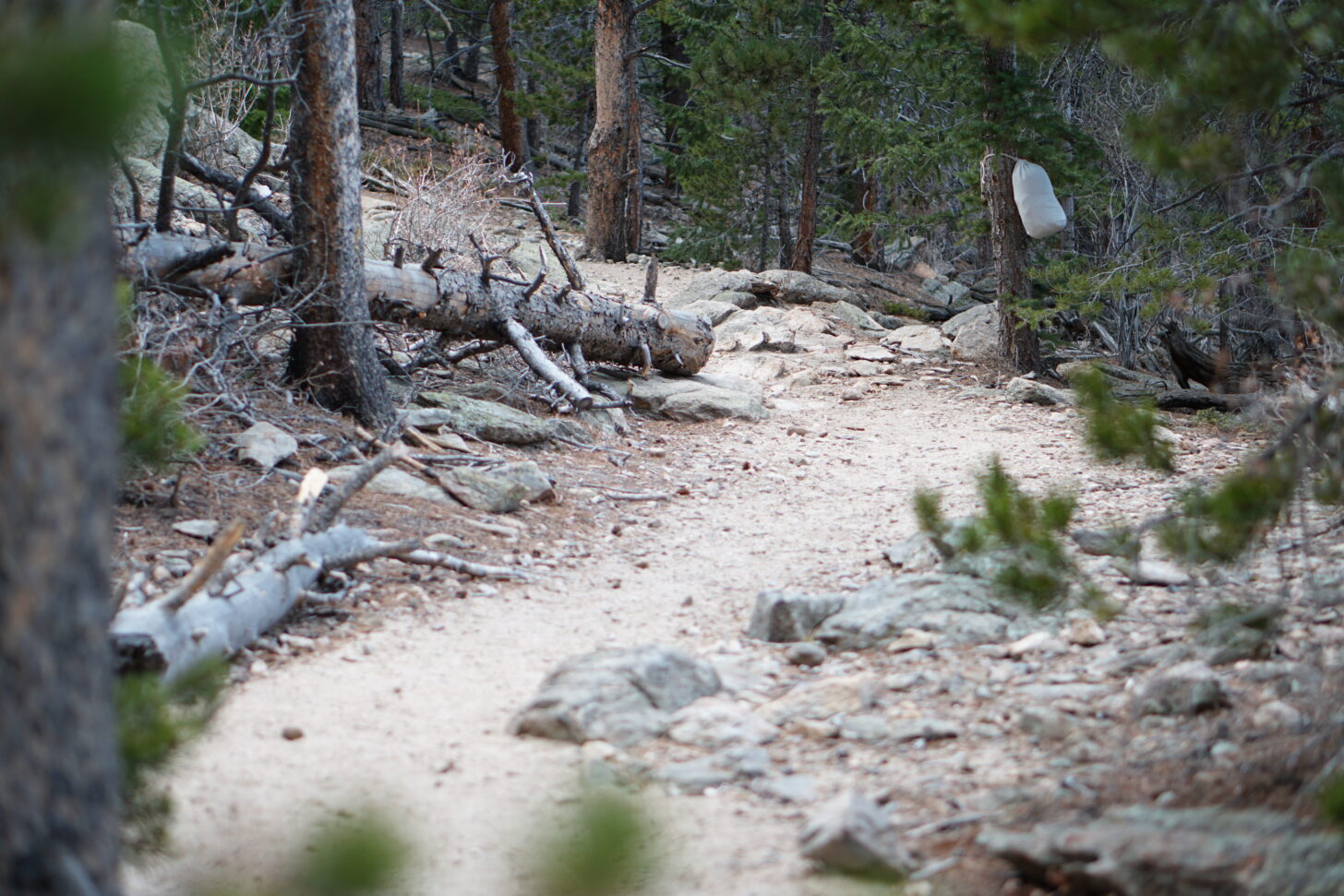
5. Don’t just “hide” your Ursack. Just because it’s hidden from view doesn’t mean animals like bears can’t follow the scent of food emanating from your Ursack and find it.
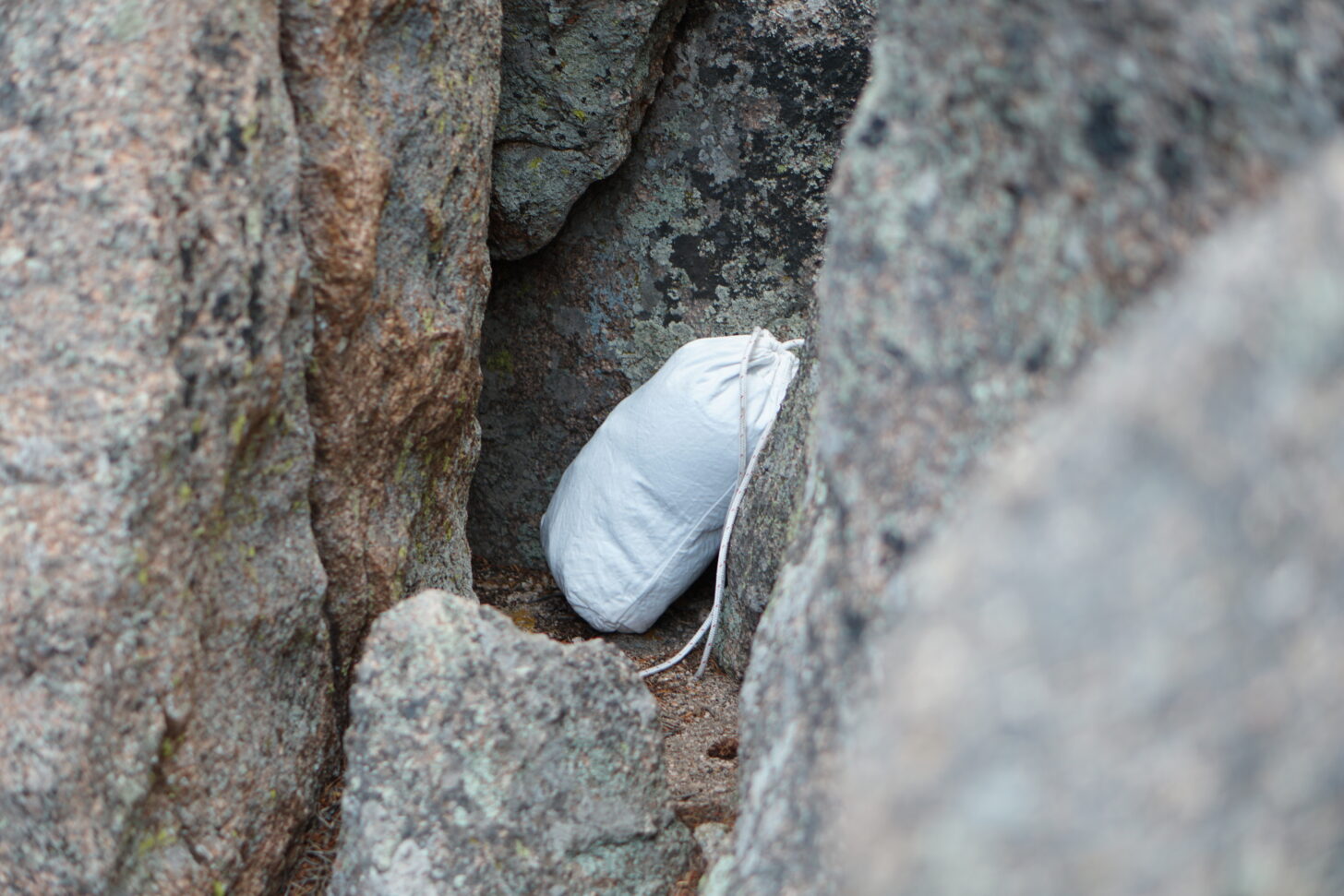
6. Don’t tie your Ursack to a deadfall. A bear can easily move it, chew through it, and steal your food bag.
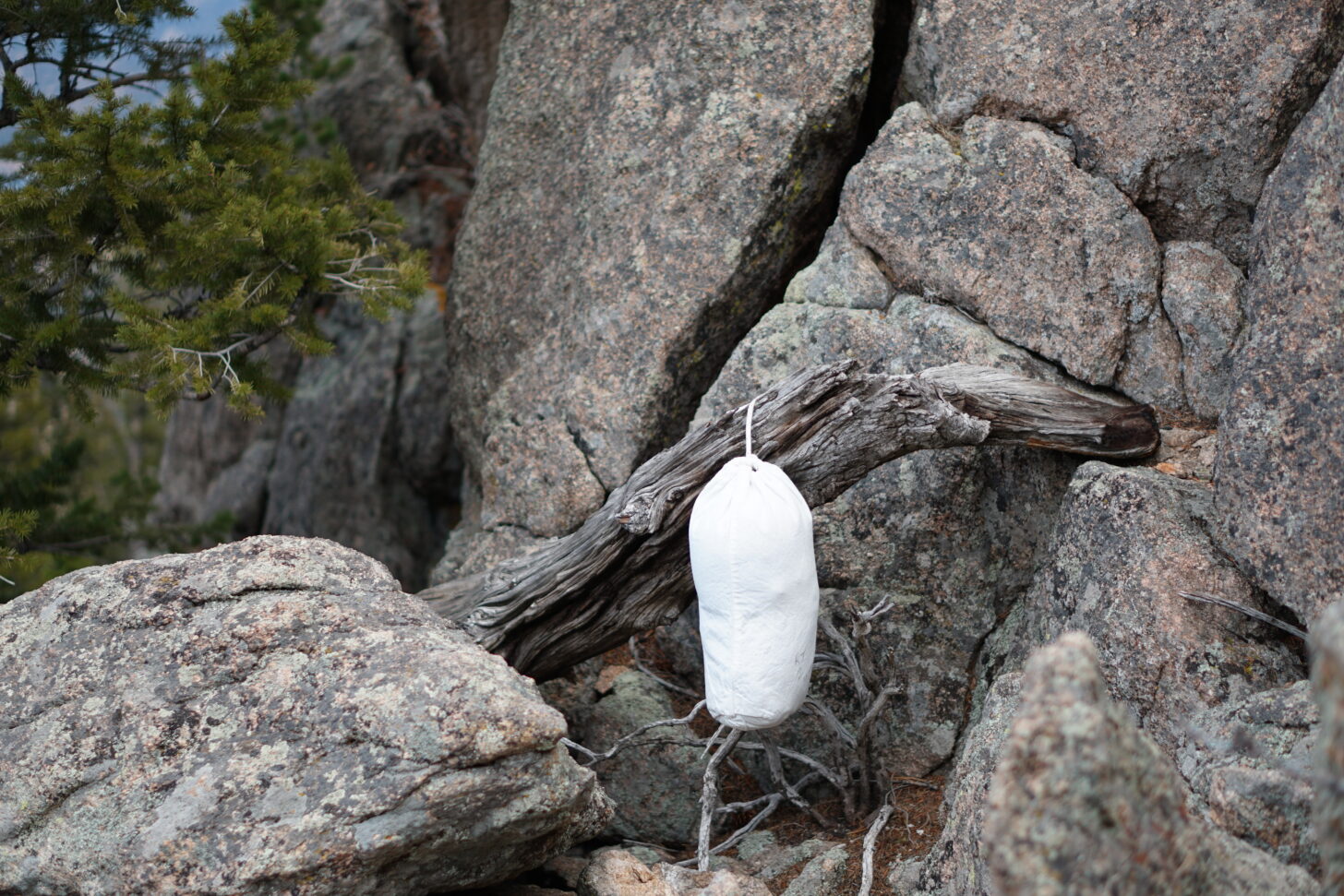
7. Don’t tie your Ursack to a standing dead tree. Dead trees are weak and can easily be toppled by a bear.
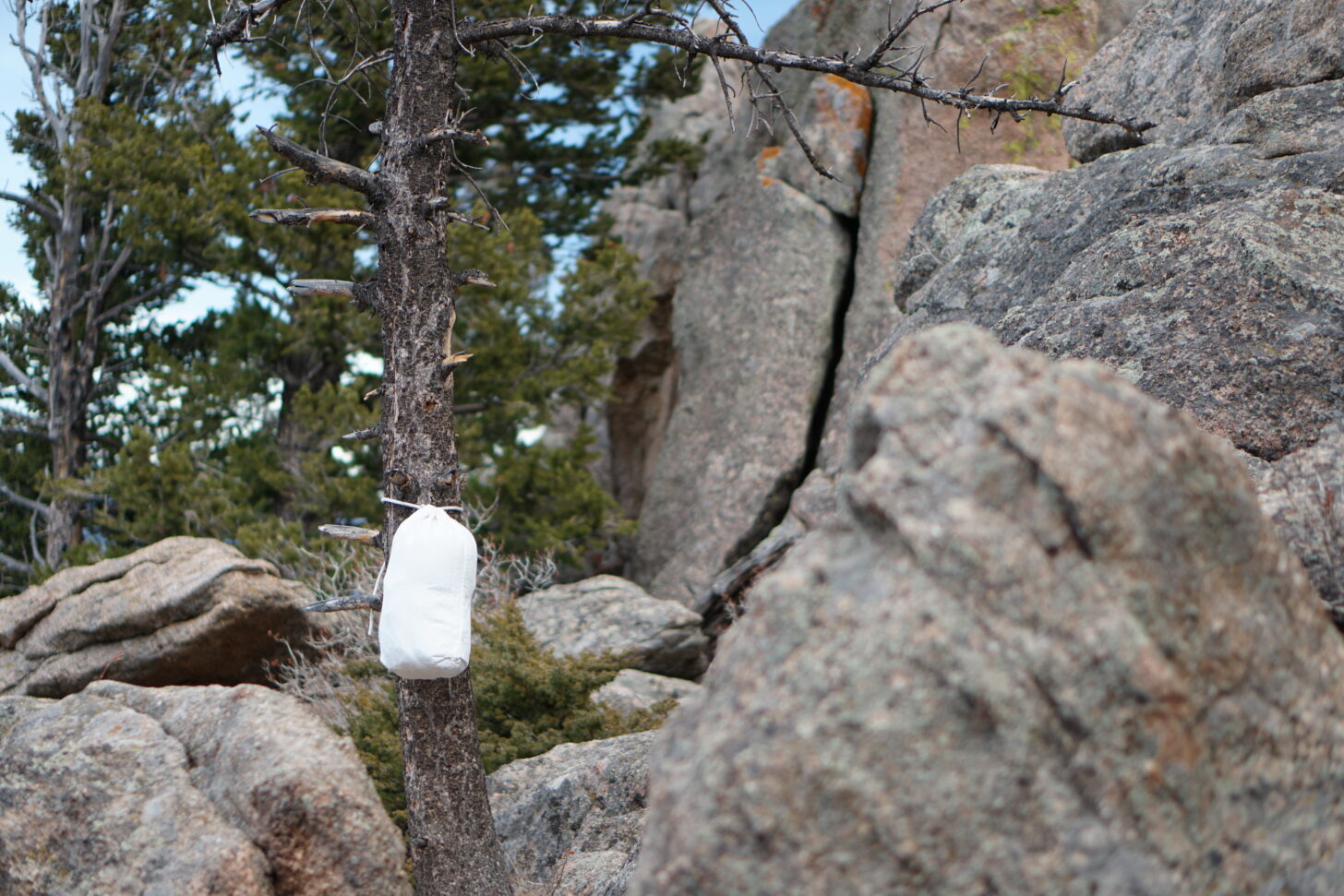
Learn More
Browse our curated recommendations in the Backpacking Light Gear Shop – a product research & discovery tool where you can find Member gear reviews, Gear Swap (used gear) listings, and more info about specific products recommended by our staff and members.
Gear Shop » Bear-Resistant Food Storage
Related Content
- more by Mark Wetherington
- improve your life in the backcountry by exploring our deep skills article catalog
DISCLOSURE (Updated April 9, 2024)
- Product mentions in this article are made by the author with no compensation in return. In addition, Backpacking Light does not accept compensation or donated/discounted products in exchange for product mentions or placements in editorial coverage. Some (but not all) of the links in this review may be affiliate links. If you click on one of these links and visit one of our affiliate partners (usually a retailer site), and subsequently place an order with that retailer, we receive a commission on your entire order, which varies between 3% and 15% of the purchase price. Affiliate commissions represent less than 15% of Backpacking Light's gross revenue. More than 70% of our revenue comes from Membership Fees. So if you'd really like to support our work, don't buy gear you don't need - support our consumer advocacy work and become a Member instead. Learn more about affiliate commissions, influencer marketing, and our consumer advocacy work by reading our article Stop wasting money on gear.




Home › Forums › How to Use an Ursack